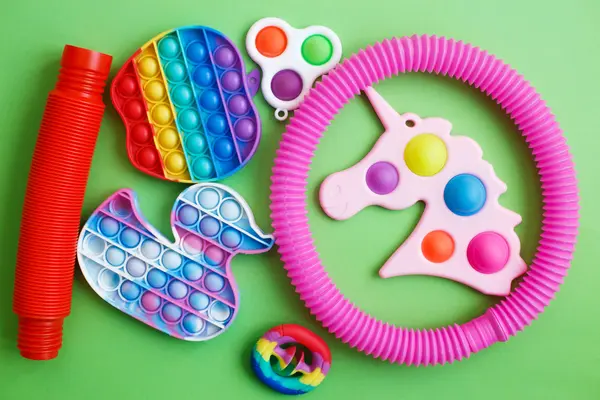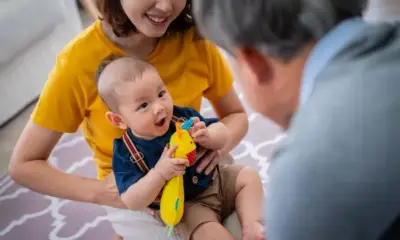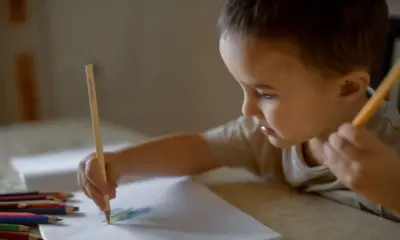Activities & Play
58 Engaging Sensory Activities for a One-Year-Old

Providing a fun and stimulating environment is essential for your baby’s growth and development. Sensory activities for a one-year-old help engage their five senses—touch, taste, smell, hearing, and sight—while supporting cognitive and motor skill development. These activities create a structured way for babies to explore different stimuli, enhancing their ability to process sensory information effectively. By participating in these activities, babies can improve their motor skills, social-emotional growth, and learning.
Key Pointers
- Sensory play helps develop fine and gross motor skills.
- It encourages interaction with different textures, smells, and sensations.
- Always supervise babies during sensory activities to ensure their safety.
Benefits of Sensory Activities for a One-Year-Old
Sensory activities are simple yet highly effective in supporting a baby’s overall development. As babies grow, they start engaging with their surroundings, developing cognitive and motor skills. Sensory activities play a crucial role in helping them process the world around them while also improving their nervous system regulation.
Key Benefits:
- Fine Motor Skills – Strengthens hand and finger muscles for grasping and manipulation.
- Cognitive Development – Encourages problem-solving and critical thinking.
- Sensory Development – Enhances touch, smell, and texture recognition.
- Socialization – Helps babies bond and build trust with others.
- Encourages Exploration – Stimulates curiosity through different textures, sounds, and smells.
- Strengthens the Sensory System – Improves sensory processing for better motor and cognitive skills.
Sensory Play Activities for One-Year-Olds
Sensory play offers endless opportunities for babies to explore and learn. Always choose age-appropriate activities and supervise playtime to ensure safety. Here are 58 fun sensory activities you can easily set up at home!
1. Box of Exploration
Fill transparent plastic boxes with small objects, seal them, and let your baby shake and inspect them.
2. Stuffed Animal Petting Zoo
Provide stuffed animals with different textures for your baby to touch and feel.
3. Canvas Painting
Wrap a canvas in plastic wrap and let your baby finger-paint with child-safe colors.
4. Sensory Bin
Fill a container with rice, beans, or pasta for hands-on exploration.
5. Yogurt Art
Spread yogurt on a plate and let your baby use carrot sticks to draw patterns.
6. Sound Composers
Stretch elastic bands over a cardboard box and let your baby pluck them like a harp.
7. Sorting Balls

Provide different colored ping pong balls and encourage your baby to sort them into bowls.
8. Self-Portrait
Hang a printout of your baby’s photo and help them identify facial features.
9. Box Tunnels
Use large cardboard boxes as tunnels for crawling fun.
10. Playdough Fun
Encourage your baby to squeeze, roll, and mold soft playdough for sensory exploration.
11. Textured Blanket
Let your baby touch blankets made from different materials like velvet, fur, or satin.
12. Sorting Pom-Poms
Provide large, colorful pom-poms and encourage your baby to sort them by color.
13. Colorful Bottles
Fill bottles with colored water and place them by a window for light effects.
14. Straws in a Container
Create openings in a box lid and demonstrate inserting straws through them.
15. Ice Tub
Fill a tub with ice and use a spray bottle with warm water to show how ice melts.
16. Bathing Toys
Place toys in a bathtub and let your baby “bathe” them.
17. Scooping Cooked Rice
Provide a spoon and encourage your baby to scoop rice into a container.
18. Paper Towel Tower
Let your baby stack and knock down paper towels.
19. Mirror Play
Allow your baby to explore their reflection in a mirror.
20. Coconut Snow
Shred coconut for a snow-like sensory experience.
21. Whipped Cream Painting
Spray whipped cream on a tray and let your baby create finger art.
22. Jingle Bell Play
Provide jingle bells for sound exploration and fine motor skill development.
23. Rice or Pasta Play
Let your baby explore raw pasta or rice for tactile learning.
24. Surprise Box
Hide toys inside a box and let your baby discover them.
25. Bathtub Art
Use baby-safe washable colors for creative water play.
26. Finger and Toe Counting
Teach basic counting using fingers and toes with nursery rhymes.
27. Block Construction
Encourage your baby to stack and explore building blocks.
28. Color Sorting with Skittles

Help your baby sort Skittles by color (ensure they don’t eat them).
29. Neighborhood Watching
Sit by the window and observe the surroundings with your baby.
30. Magnetic Magic
Place small magnetic items in a sealed tub and let your baby move them with a magnet.
31. Sensory Ball Pool
Fill a tub with colorful balls of different textures.
32. Dangling Loofahs
Hang loofahs and let your baby play with them.
33. Bucket Drums
Flip buckets over and let your baby create music.
34. Vegetable Peels Exploration
Let your baby feel and smell different vegetable peels.
35. Walk in the Garden
Let your baby feel grass under their feet.
36. Kitchen Exploration
Supervise your baby as they explore safe kitchen items.
37. Kitchen Music Fest
Encourage your baby to make sounds with kitchen utensils.
38. Animal Charades
Make animal sounds and encourage your baby to mimic them.
39. Halloween Sensory Bag
Place pumpkin seeds and pulp in a bag for your baby to squish.
40. Tickle Time
Engage in tickling games to encourage giggles and bonding.
41. Sponge and Water Play
Let your baby squeeze a sponge in water for hand-strengthening practice.
42. Mystery Lunchbox
Fill a lunchbox with small toys or snacks for a fun surprise.
43. Phonograph Easter Eggs
Fill plastic eggs with small items to create sound toys.
44. Paper Play
Give your baby safe paper to crumple and tear.
45. Nature Stroll
Encourage your baby to feel dry leaves and flowers outdoors.
46. Snowman Bottle
Fill a bottle with cotton and decorate it as a snowman.
47. Ribbon Pulling
Fill an Oball with ribbons and let your baby pull them.
48. Bubble Foam
Let your baby explore bubbles made from baby-safe soap and water.
49. Sensory Balloons
Fill balloons with different materials like sand or water for exploration.
50. Peek-a-Boo
Engage in classic peek-a-boo games to develop social skills.
51. Retrieving Toys
Attach toys to a table with tape and encourage your baby to remove them.
52. Plastic Egg Play
Encourage your baby to open and stack plastic eggs.
53. Cup Towers
Let your baby stack and knock down plastic cups.
54. Whisker Paint
Use yogurt or oatmeal with food coloring for sensory painting.
55. Rainstick Play
Shake a rainstick to explore sound.
56. Finger Painting
Let your baby paint with fingers using baby-safe colors.
57. Sticky Wall Art
Give your baby stickers or sticky tape to create designs on a paper-covered wall.
58. Solving Puzzles
Introduce simple puzzles with large, safe pieces.
Frequently Asked Questions
- What are early signs of sensory issues?
Sensitivity to light, noise, or textures, and difficulty adjusting to clothing. - Do sensory issues indicate autism?
Not always, but sensory challenges are common in autistic children. - Can sensory issues cause speech delay?
Yes, sensory processing difficulties can impact speech development. - What safety tips should I follow for sensory play?
Use non-toxic materials, supervise play, and avoid small choking hazards.
Sensory activities are a wonderful way to help your one-year-old explore, learn, and develop while having fun!












